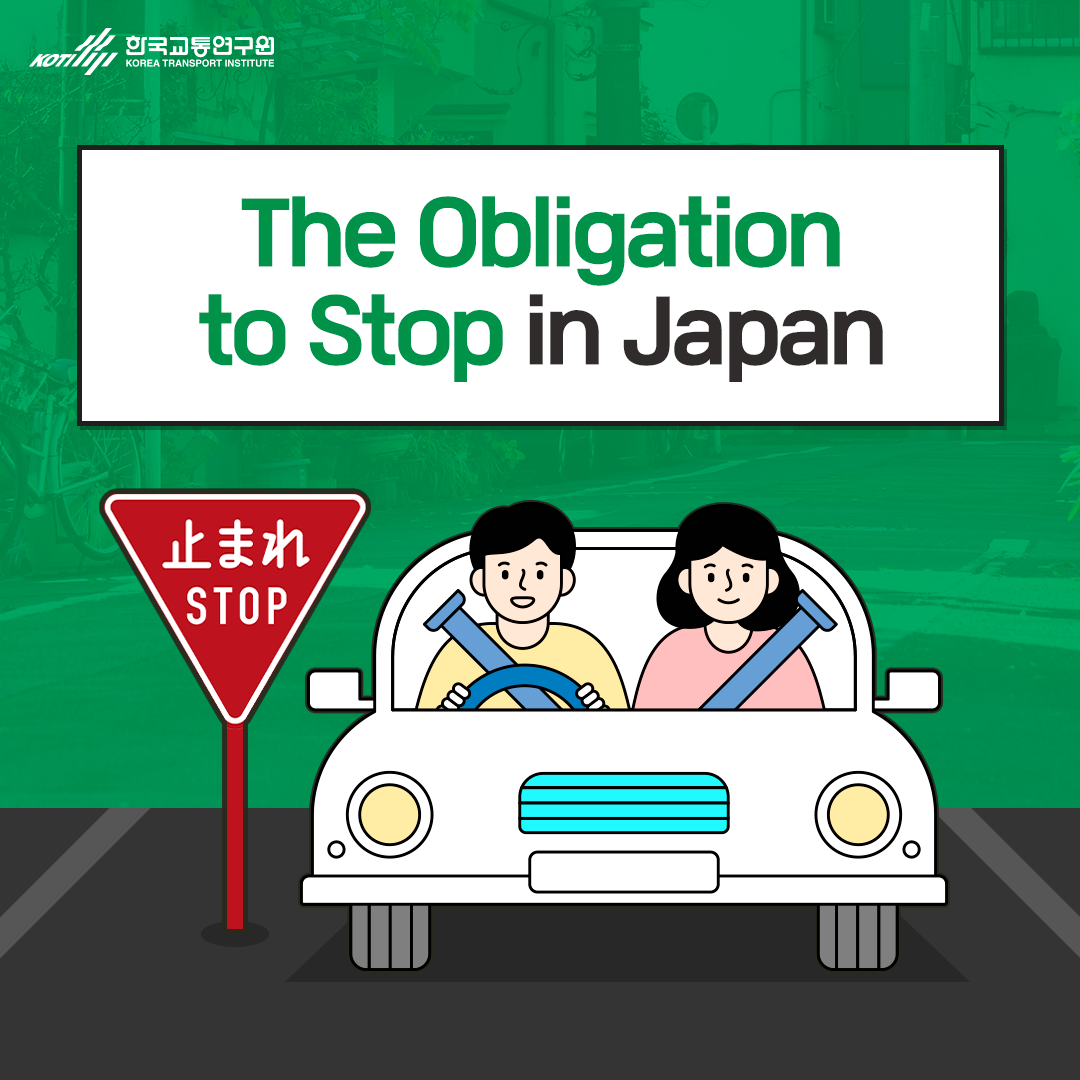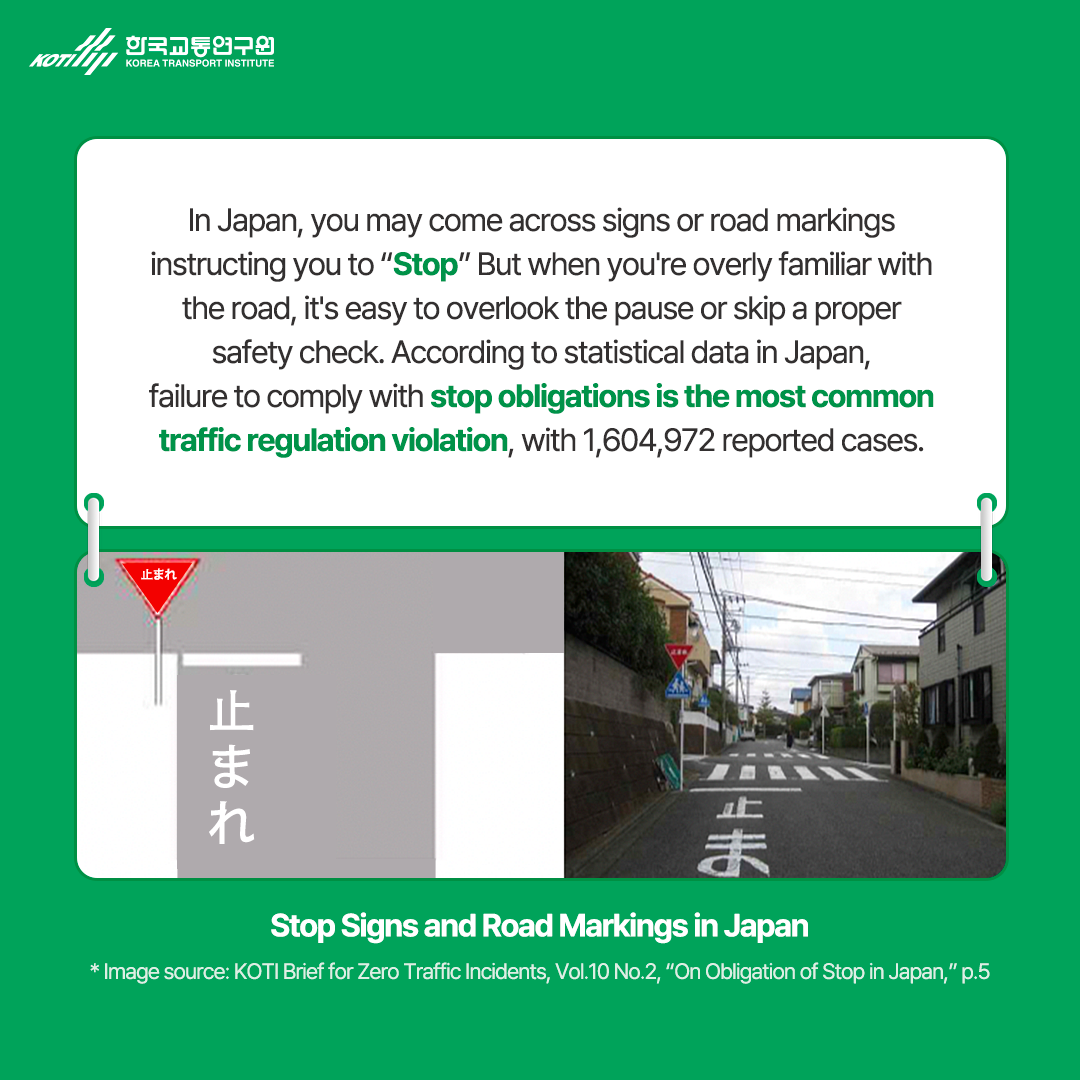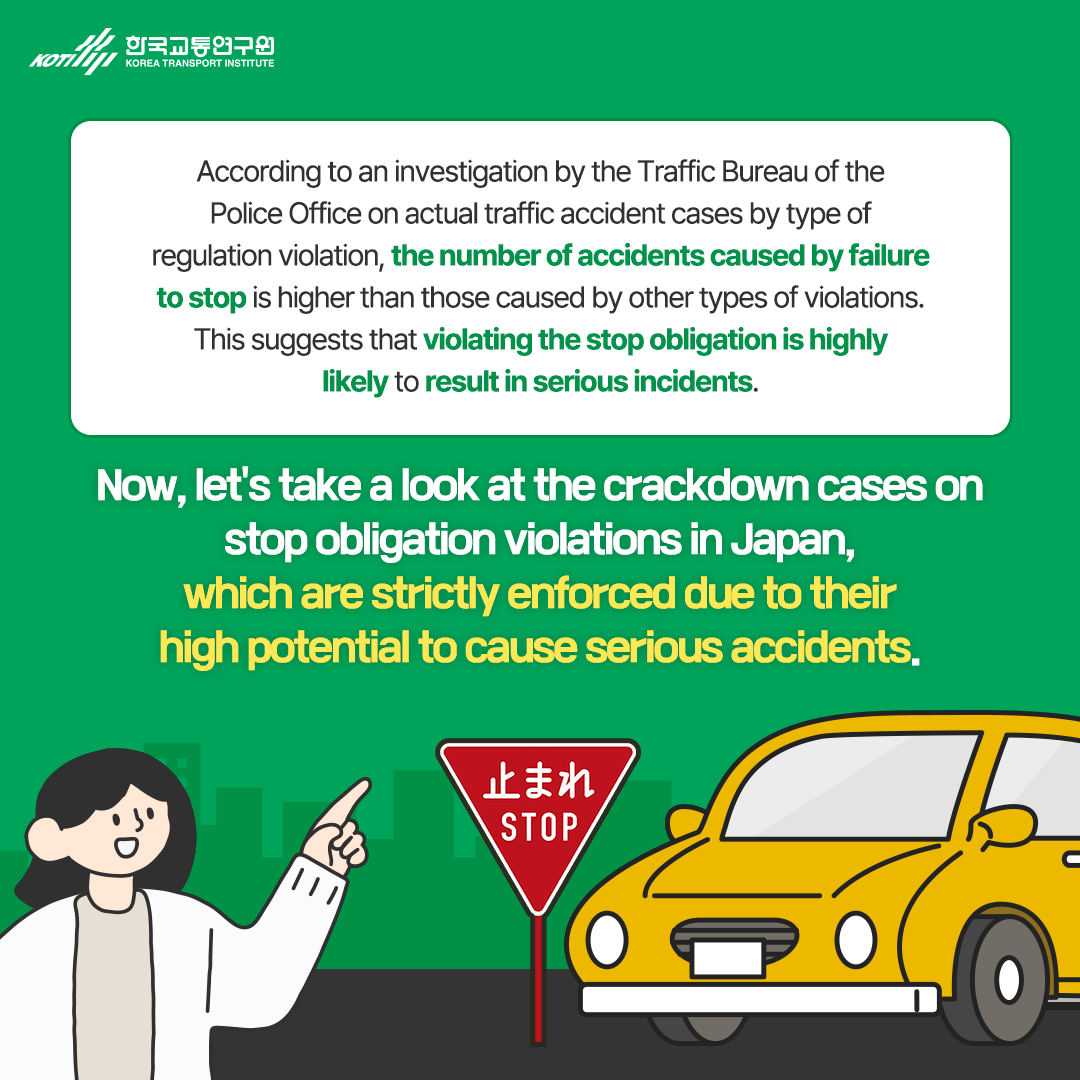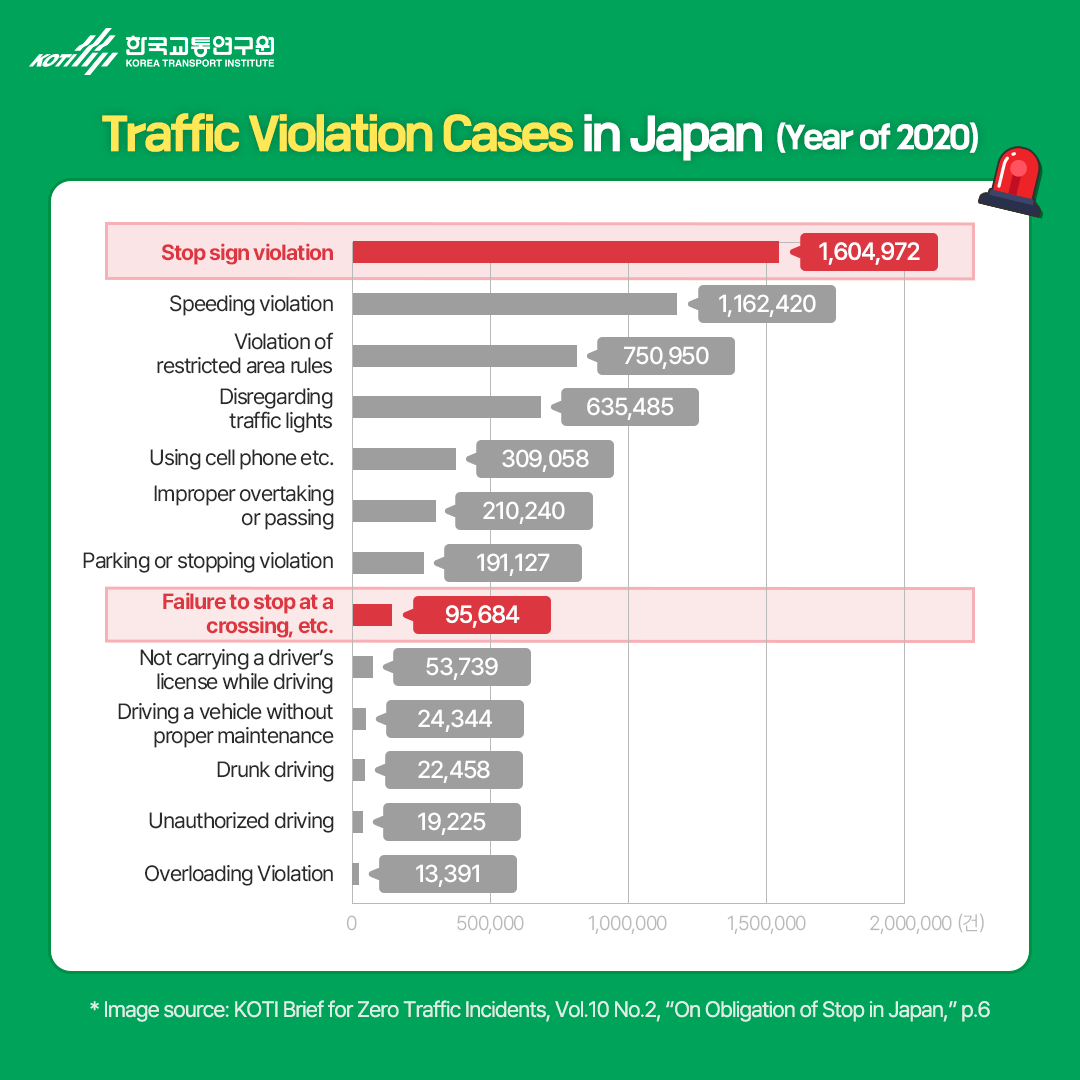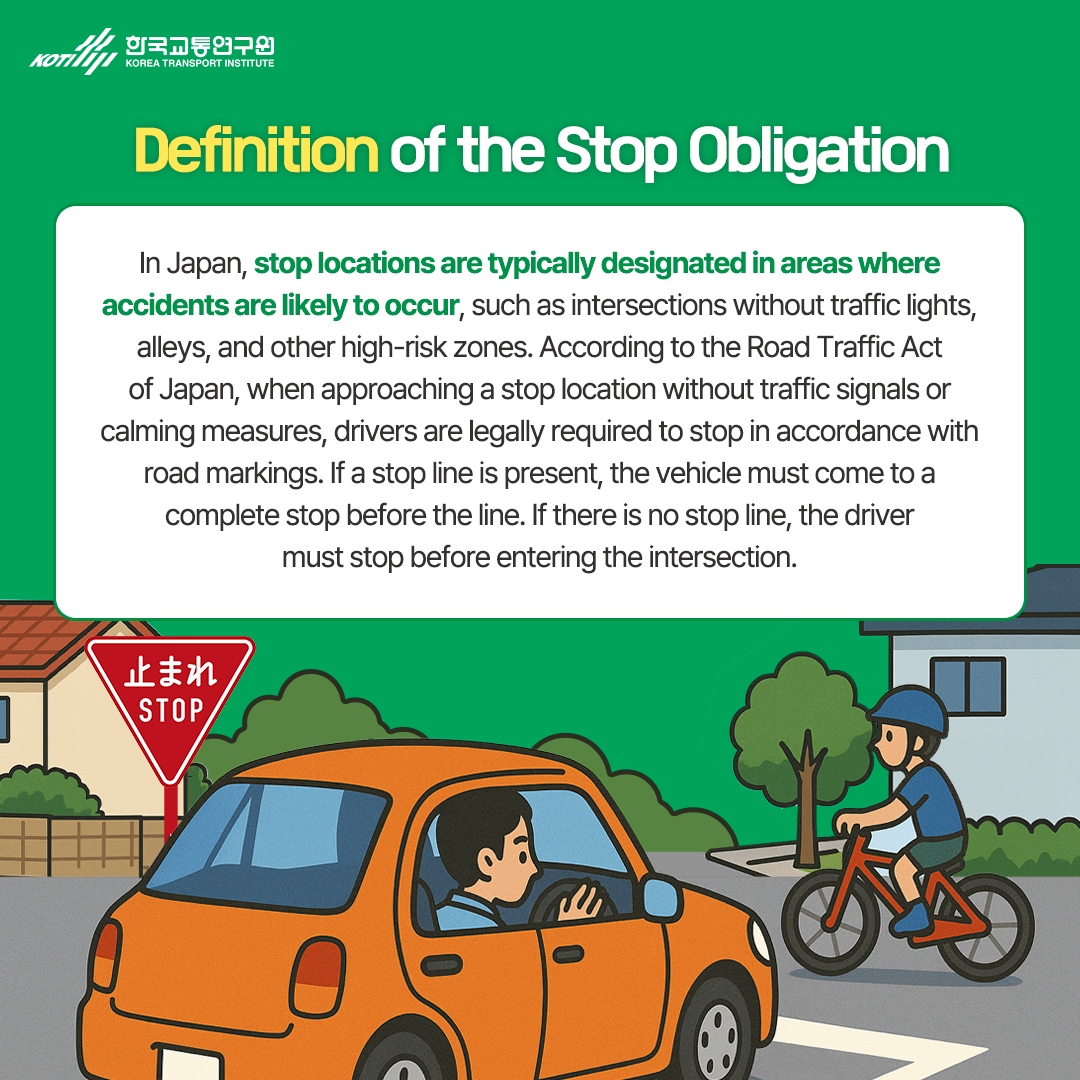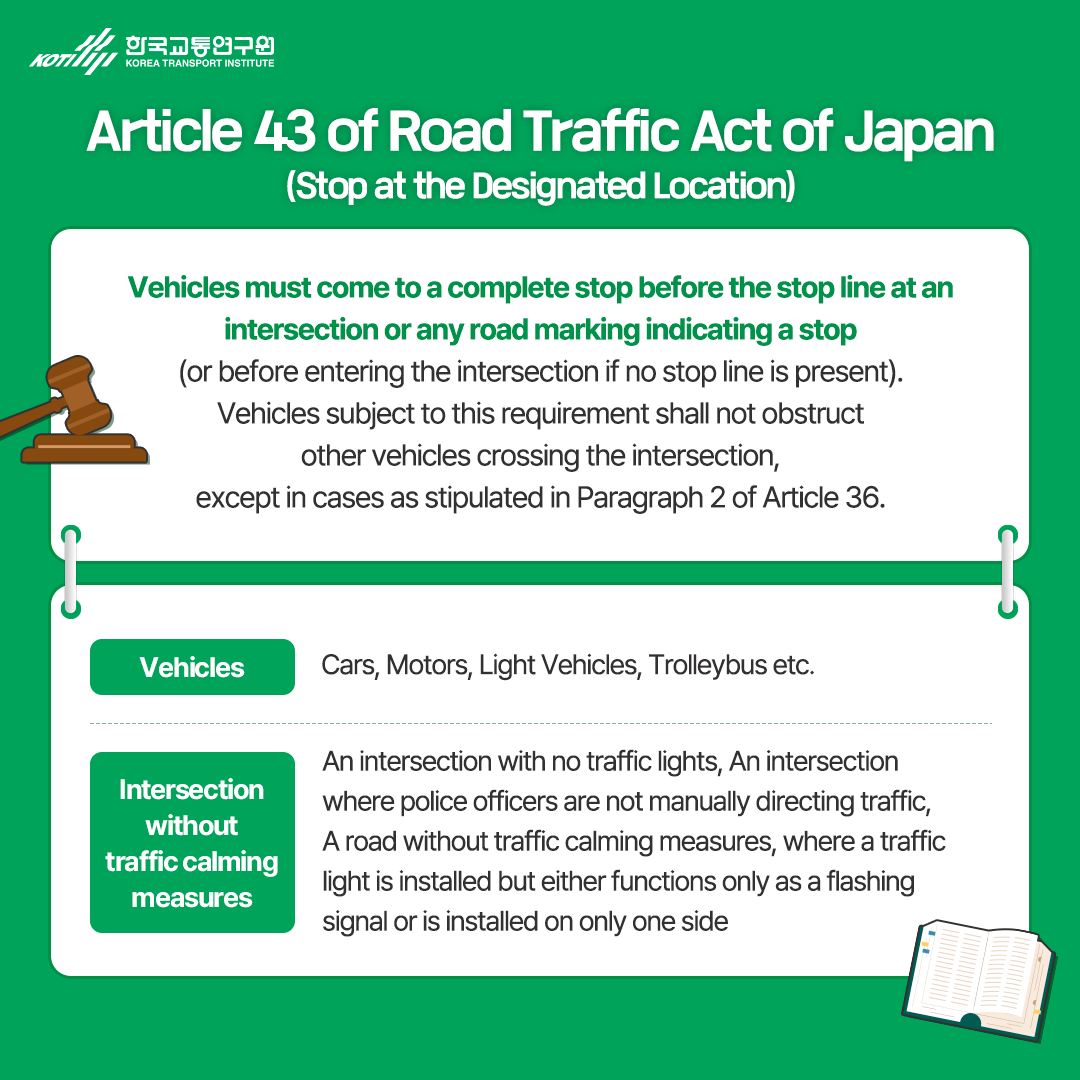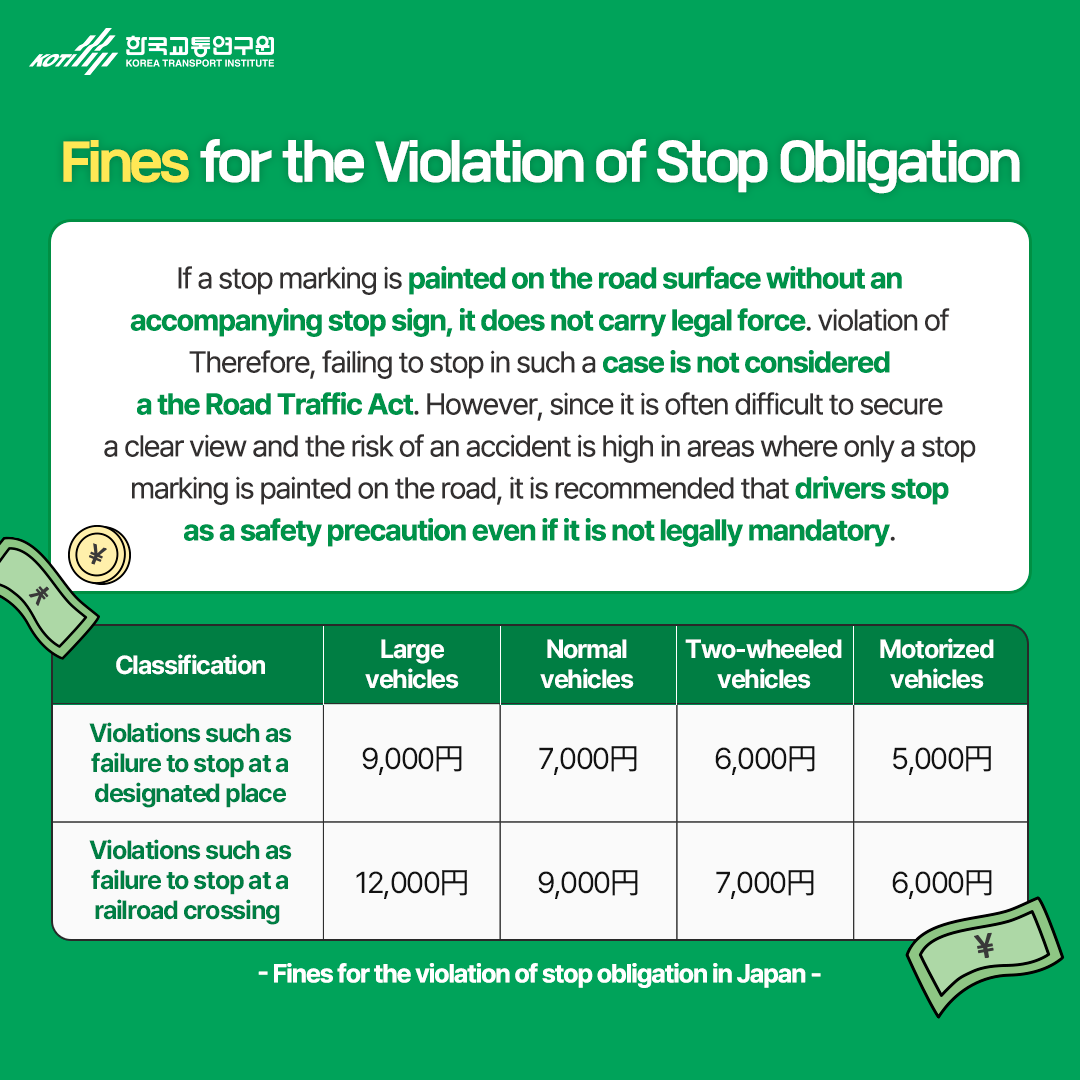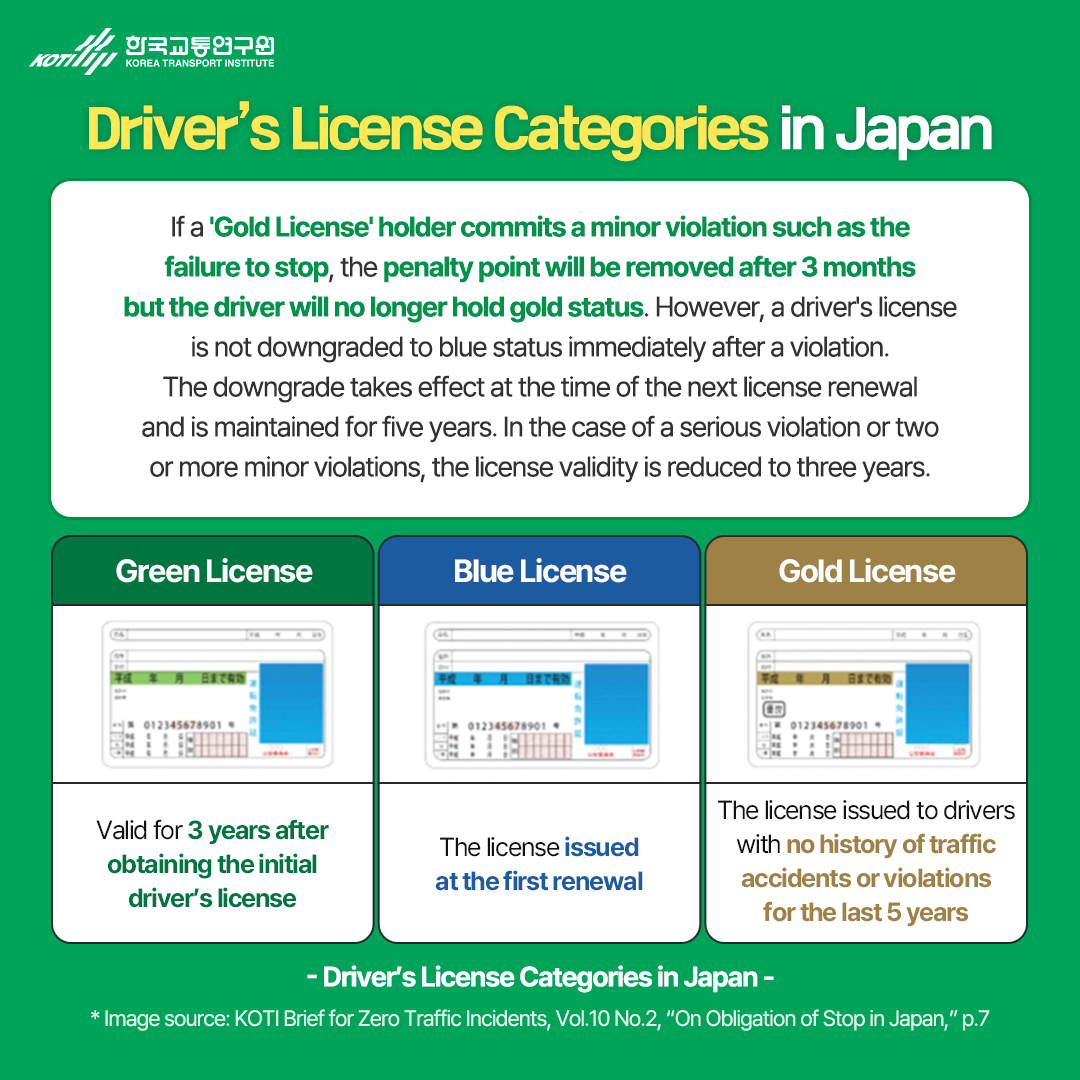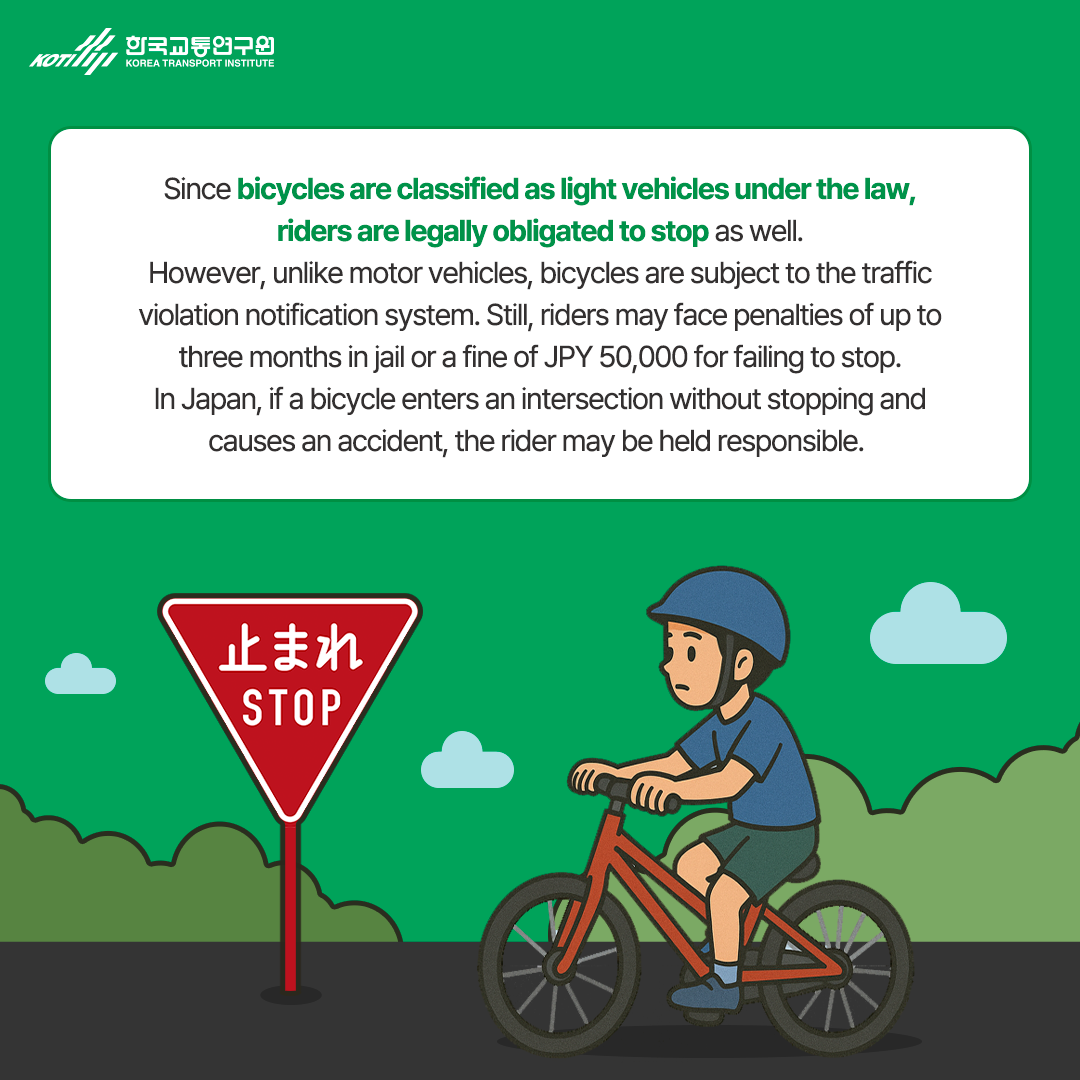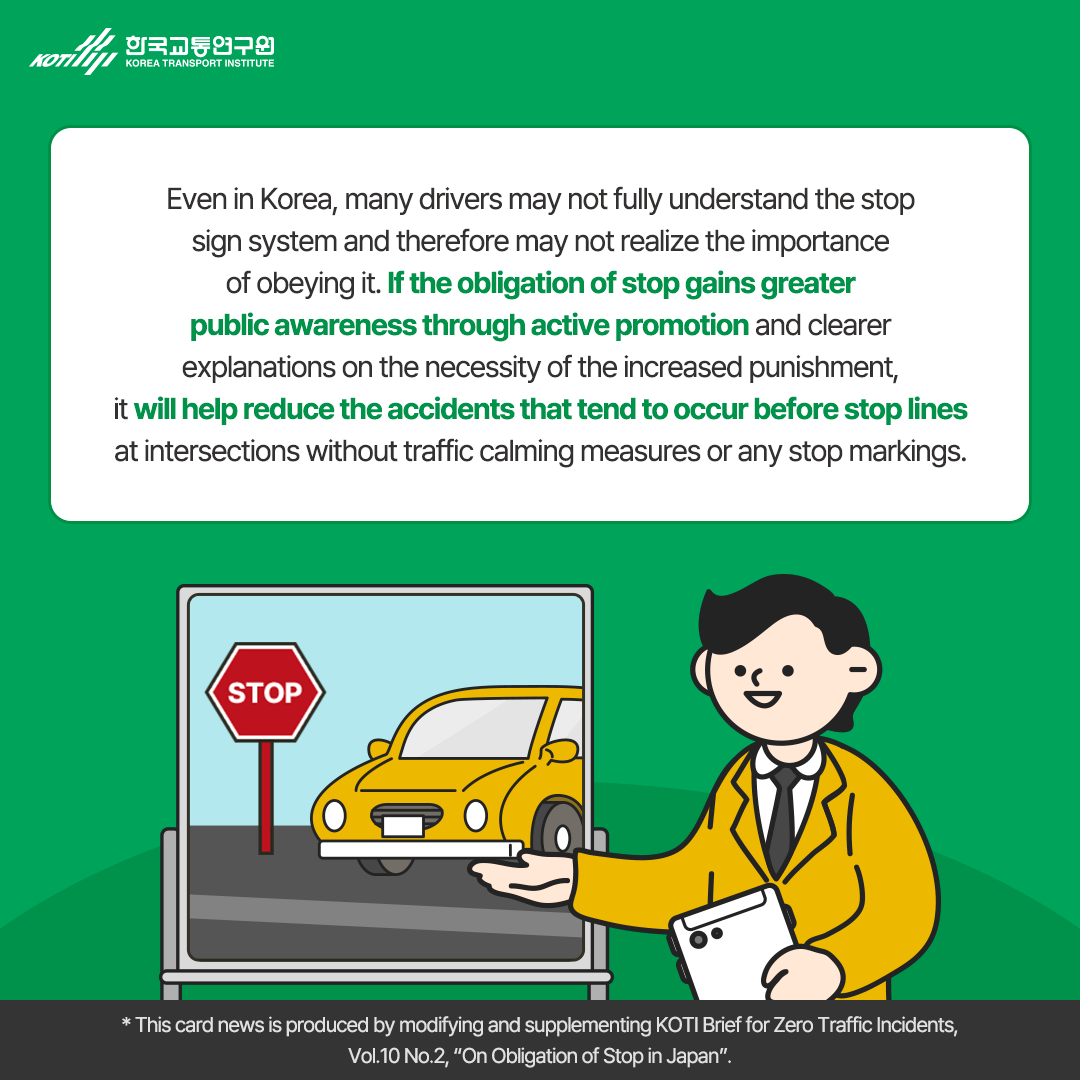Card News

NEWS
KOTI - Korea Transport institute
Feeds and Updates
The Obligation to Stop in Japan
June 27 2025
-
The Obligation to Stop in Japan
In Japan, you may come across signs or road markings instructing you to “Stop” But when you're overly familiar with the road, it's easy to overlook the pause or skip a proper safety check.
According to statistical data in Japan, failure to comply with stop obligations is the most common traffic regulation violation, with 1,604,972 reported cases.
According to an investigation by the Traffic Bureau of the Police Office on actual traffic accident cases by type of regulation violation, the number of accidents caused by failure to stop is higher than those caused by other types of violations. This suggests that violating the stop obligation is highly likely to result in serious incidents.
Now, let's take a look at the crackdown cases on stop obligation violations in Japan, which are strictly enforced due to their high potential to cause serious accidents.
Definition of the Stop Obligation
In Japan, stop locations are typically designated in areas where accidents are likely to occur, such as intersections without traffic lights, alleys, and other high-risk zones. According to the Road Traffic Act of Japan, when approaching a stop location without traffic signals or calming measures, drivers are legally required to stop in accordance with road markings. If a stop line is present, the vehicle must come to a complete stop before the line. If there is no stop line, the driver must stop before entering the intersection.
Article 43 of Road Traffic Act of Japan
(Stop at the Designated Location)
Vehicles must come to a complete stop before the stop line at an intersection or any road marking indicating a stop (or before entering the intersection if no stop line is present). Vehicles subject to this requirement shall not obstruct other vehicles crossing the intersection, except in cases as stipulated in Paragraph 2 of Article 36.
※ Vehicles: Cars, Motors, Light Vehicles, Trolleybus etc.
※ Intersection without traffic calming measures: An intersection with no traffic lights, An intersection where police officers are not manually directing traffic, A road without traffic calming measures, where a traffic light is installed but either functions only as a flashing signal or is installed on only one side
Fines for the Violation of Stop Obligation
If a stop marking is painted on the road surface without an accompanying stop sign, it does not carry legal force. Therefore, failing to stop in such a case is not considered a violation of the Road Traffic Act.
However, since it is often difficult to secure a clear view and the risk of an accident is high in areas where only a stop marking is painted on the road, it is recommended that drivers stop as a safety precaution even if it is not legally mandatory.
Driver’s License Categories in Japan
If a 'Gold License' holder commits a minor violation such as the failure to stop, the penalty point will be removed after 3 months but the driver will no longer hold gold status. However, a driver's license is not downgraded to blue status immediately after a violation. The downgrade takes effect at the time of the next license renewal and is maintained for five years. In the case of a serious violation or two or more minor violations, the license validity is reduced to three years.
Since bicycles are classified as light vehicles under the law, riders are legally obligated to stop as well. However, unlike motor vehicles, bicycles are subject to the traffic violation notification system. Still, riders may face penalties of up to three months in jail or a fine of JPY 50,000 for failing to stop. In Japan, if a bicycle enters an intersection without stopping and causes an accident, the rider may be held responsible.
Even in Korea, many drivers may not fully understand the stop sign system and therefore may not realize the importance of obeying it. If the obligation of stop gains greater public awareness through active promotion and clearer explanations on the necessity of the increased punishment, it will help reduce the accidents that tend to occur before stop lines at intersections without traffic calming measures or any stop markings.
* This card news is produced by modifying and supplementing KOTI Brief for Zero Traffic Incidents, Vol.10 No.2, “On Obligation of Stop in Japan”.
